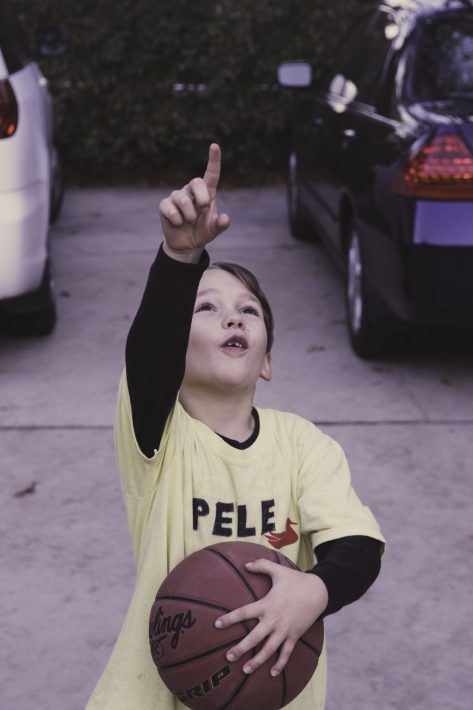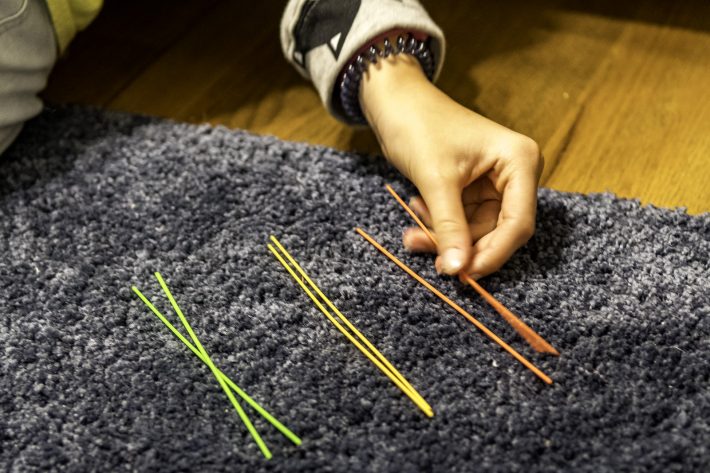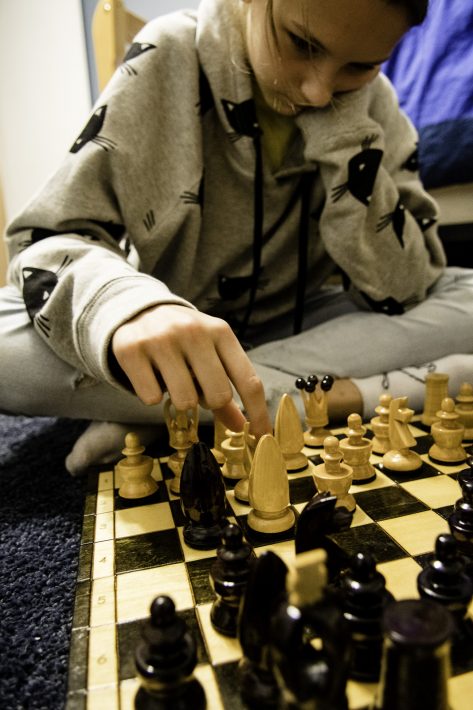When I got home, E was ready for some basketball practice. We don’t have a basketball goal, and there’s really no place we could put one, so that limits our play to some degree. Fortunately, he’s happy just to practice the basics: chest passes, bounce passes, and a bit of dribbling.
Sometimes K and I worry about his self-confidence, but at times, it seems he has a bit too much. “I’m already very good at dribbling!” he proclaimed as he slapped at the basketball. Certainly, in comparison to what he was doing a couple of weeks ago, he’s much better. But has he, as he insists, almost mastered it? So I have this fine balance to walk with him: keep him realistic but not crush his spirit.
“You’re much better than you were,” I said, “but there’s always room for improvement.”
“Well, yeah,” he said, “of course there’s always room for improvement.”
We took a little break to look at a few unusual clouds. One, in particular, looked as if Bob Ross had taken one of his wide, fan brushes and made a few strokes of Titanium White on Phthalo Blue.
After dinner, we played with his Legos. He took the Millennium Falcon set that he’d completed Sunday, tore it apart, and built something new from it. It’s a common thing he does: follow the directions, build everything in the set, then never build it again. That’s what Legos are for, I suppose.
When it came time for E to work with K on a little homework, I went up to see what the Girl was doing.
“Watching YouTube.” That’s how she spends most of her screen time these days. She watches DIY’ers and slime makers, but more and more, she watches more mature things. Like how to do makeup. She’s growing up.
“Want to play a game?” I asked. “Your choice.” But it really wasn’t. There were a couple of games that I nixed immediately. One, because I don’t even understand how to play it. A board game that has ten plus pages of instructions is not something I have the patience to learn. The other, well, I don’t really understand it either. We settled on Kerplunk, a game that takes longer to set up than to play.
I noticed how different we are regarding our sense of organization. The Girl wanted to segregate all the straws by color and then put them in the cylinder layered by colors, and she wanted the marbles segregated to the same ends. As she pulled out straws, she placed them in color-sorted piles. I, on the other hand, wanted the straws placed as chaotically as possible, and my pulled straws — just tossed in a pile.
After she beat me twice, I said, “Well, that’s fine. But you still won’t get me in chess.”
“Yes, I can beat you!” she cried and headed downstairs to get the chess set. I beat her, but she has improved so much that it’s difficult to believe. Her development followed tried-and-true principles (which is not to say “theoretical principles”–we haven’t talked about openings themselves, only the idea of getting out your minor pieces, castling, and connecting your rooks as basic opening development), and she saw clearly several threats a couple of moves away. As the game concluded, I showed her what backline mate threats are, how to anticipate them, and how to avoid them.
A perfect evening, in other words.







